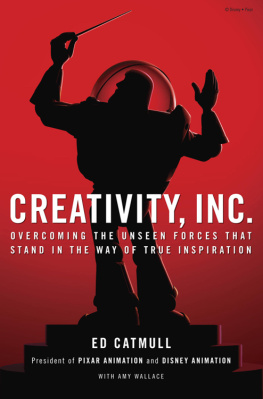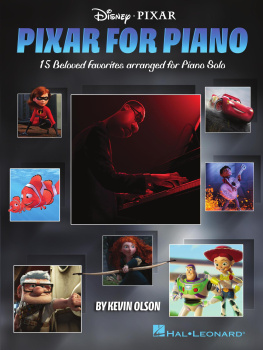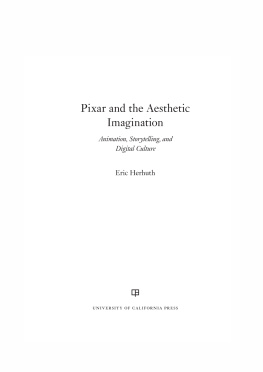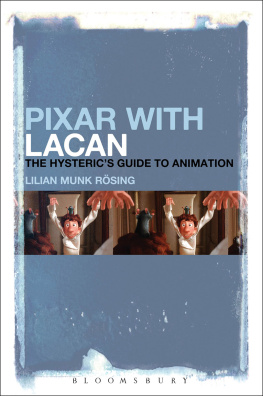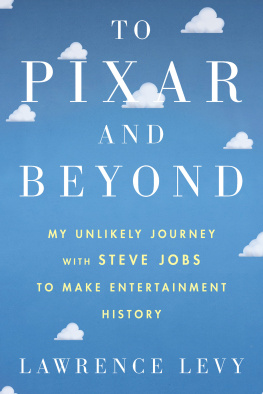Ed Catmull - Creativity, Inc.: Overcoming the Unseen Forces That Stand in the Way of True Inspiration
Here you can read online Ed Catmull - Creativity, Inc.: Overcoming the Unseen Forces That Stand in the Way of True Inspiration full text of the book (entire story) in english for free. Download pdf and epub, get meaning, cover and reviews about this ebook. year: 2014, publisher: Random House, genre: Romance novel. Description of the work, (preface) as well as reviews are available. Best literature library LitArk.com created for fans of good reading and offers a wide selection of genres:
Romance novel
Science fiction
Adventure
Detective
Science
History
Home and family
Prose
Art
Politics
Computer
Non-fiction
Religion
Business
Children
Humor
Choose a favorite category and find really read worthwhile books. Enjoy immersion in the world of imagination, feel the emotions of the characters or learn something new for yourself, make an fascinating discovery.
- Book:Creativity, Inc.: Overcoming the Unseen Forces That Stand in the Way of True Inspiration
- Author:
- Publisher:Random House
- Genre:
- Year:2014
- Rating:3 / 5
- Favourites:Add to favourites
- Your mark:
Creativity, Inc.: Overcoming the Unseen Forces That Stand in the Way of True Inspiration: summary, description and annotation
We offer to read an annotation, description, summary or preface (depends on what the author of the book "Creativity, Inc.: Overcoming the Unseen Forces That Stand in the Way of True Inspiration" wrote himself). If you haven't found the necessary information about the book — write in the comments, we will try to find it.
NEW YORK TIMES BESTSELLER | NAMED ONE OF THE BEST BOOKS OF THE YEAR BY The Huffington PostFinancial TimesSuccessInc.Library Journal
Creativity, Inc. is a manual for anyone who strives for originality and the first-ever, all-access trip into the nerve center of Pixar Animationinto the meetings, postmortems, and Braintrust sessions where some of the most successful films in history are made. It is, at heart, a book about creativitybut it is also, as Pixar co-founder and president Ed Catmull writes, an expression of the ideas that I believe make the best in us possible. For nearly twenty years, Pixar has dominated the world of animation, producing such beloved films as the Toy Story trilogy, Monsters, Inc., Finding Nemo, The Incredibles, Up, WALL-E, and Inside Out, which have gone on to set box-office records and garner thirty Academy Awards. The joyousness of the storytelling, the inventive plots, the emotional authenticity: In some ways, Pixar movies are an object lesson in what creativity really is. Here, in this book, Catmull reveals the ideals and techniques that have made Pixar so widely admiredand so profitable. As a young man, Ed Catmull had a dream: to make the first computer-animated movie. He nurtured that dream as a Ph.D. student at the University of Utah, where many computer science pioneers got their start, and then forged a partnership with George Lucas that led, indirectly, to his co-founding Pixar in 1986. Nine years later, Toy Story was released, changing animation forever. The essential ingredient in that movies successand in the thirteen movies that followedwas the unique environment that Catmull and his colleagues built at Pixar, based on leadership and management philosophies that protect the creative process and defy convention, such as: Give a good idea to a mediocre team, and they will screw it up. But give a mediocre idea to a great team, and they will either fix it or come up with something better. If you dont strive to uncover what is unseen and understand its nature, you will be ill prepared to lead. Its not the managers job to prevent risks. Its the managers job to make it safe for others to take them. The cost of preventing errors is often far greater than the cost of fixing them. A companys communication structure should not mirror its organizational structure. Everybody should be able to talk to anybody.
Ed Catmull: author's other books
Who wrote Creativity, Inc.: Overcoming the Unseen Forces That Stand in the Way of True Inspiration? Find out the surname, the name of the author of the book and a list of all author's works by series.

